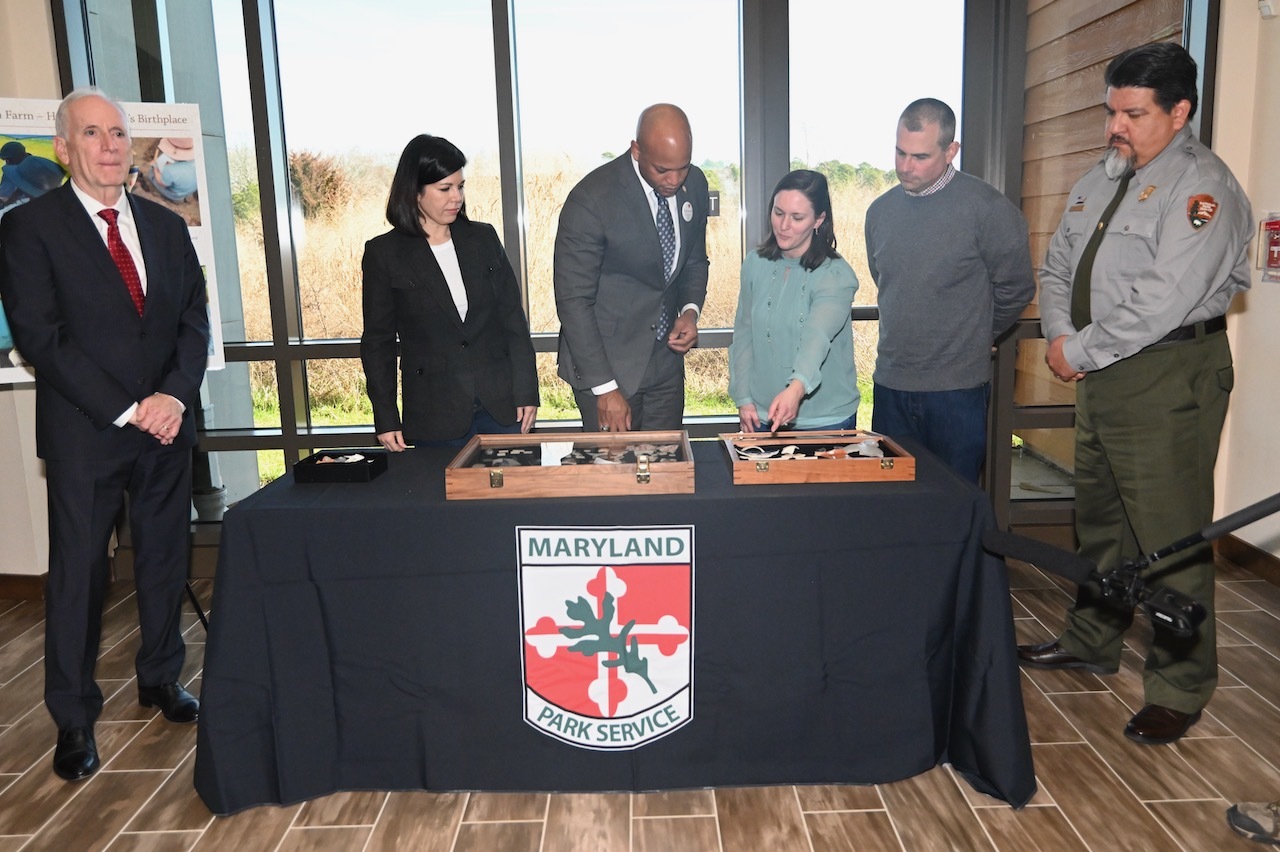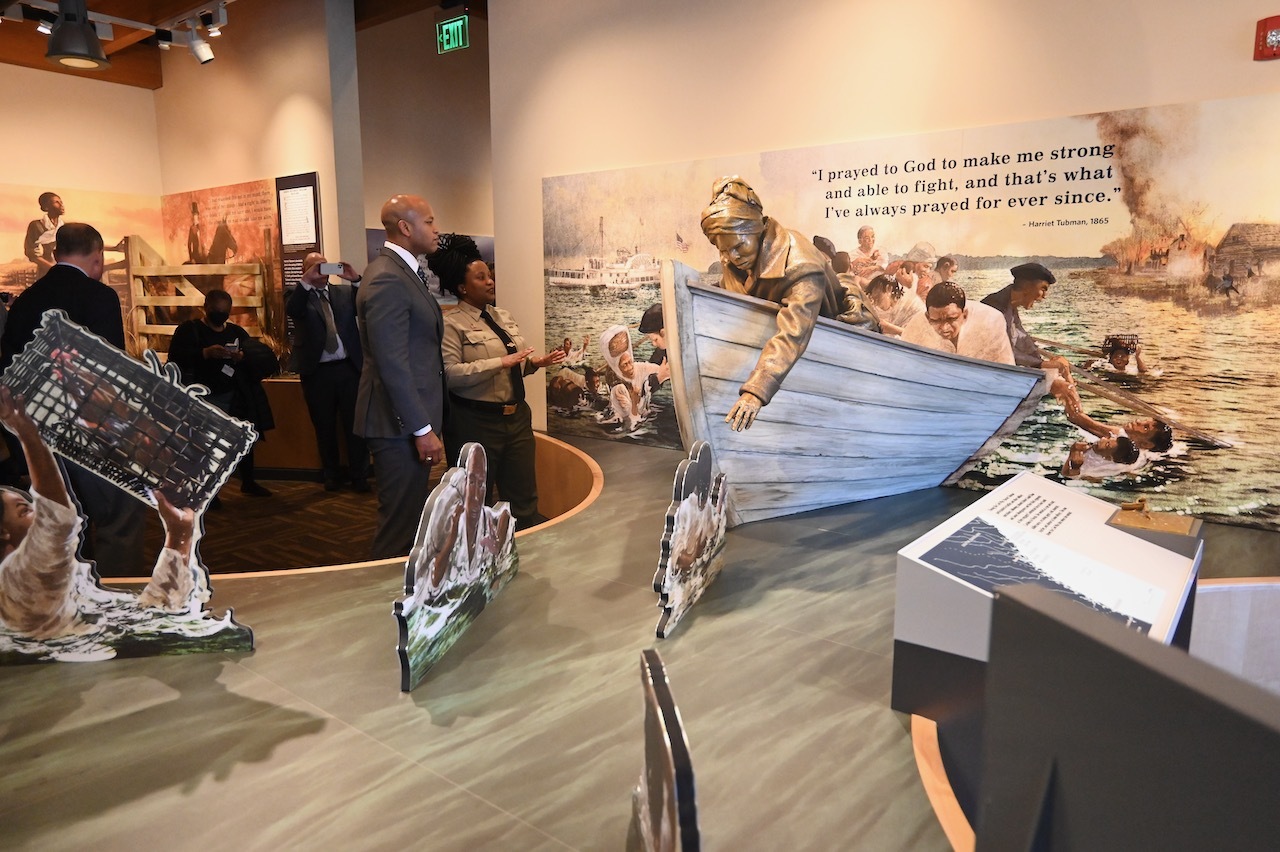Discovery Follows the April 2021 Announcement of the Finding of the Home of Ben Ross, Harriet Tubman's Father
ANNAPOLIS, MD—Governor Wes Moore today joined local, state and federal partners at the Harriet Tubman Underground Railroad Visitor Center in Dorchester County to announce the discovery of a home where enslaved people lived on the Thompson Farm, the birthplace of Harriet Tubman. The discovery of the home—believed to be that of an enslaved overseer, possibly Jerry Manokey—follows the April 2021 announcement of the discovery of the home of Ben Ross, Harriet Tubman's father.
“Harriet Tubman's birthplace is sacred ground, and this discovery is part of our ongoing commitment to preserve the legacy of those who lived here," said Governor Moore. “The find reveals untold stories of the past that help us both understand the history we share and inspire us to make a better future."

Maryland Department of Transportation Chief Archaeologist Dr. Julie Schablitsky and her team have been searching for the homes of those enslaved on the Thompson Farm for more than two years. At one time, more than 40 enslaved people lived there. The home discovery is on private property, while the archaeological remains of Mr. Ross's home are located on the Blackwater National Wildlife Refuge.
Beneath layers of soil, archaeologists uncovered a substantial brick building foundation of the home. The excavation also revealed hundreds of artifacts, including a West African spirit cache. The cache, found during excavations last year, included a glass heart-shaped perfume bottle stopper, a white ceramic dish, and a copper alloy button. Enslaved people are believed to have placed the cache in front of the home's fireplace to protect the occupants from negative spirits.

“This fascinating discovery adds another chapter to the incredible story of Harriet Tubman, a Marylander who led a life in pursuit of freedom for herself and others," said Maryland Department of Transportation Acting Secretary Paul J. Wiedefeld. “I'm proud of the dedicated work of our archaeologists; their efforts reflect our commitment to preserve and protect the heritage of Maryland's communities."
Sharing and telling the story of Harriet Tubman has been a multi-year partnership between local, state and federal agencies. Today's announcement is the result of collaboration between the Maryland Department of Transportation, the Maryland Department of Natural Resources, the Maryland Department of Commerce, Dorchester County, the U.S. Department of Transportation Federal Highway Administration's National Scenic Byways Program and the U.S. Department of Interior's National Park Service and Fish and Wildlife Service. The partnerships have led to international recognition of the Harriet Tubman Underground Railroad Visitor Center, Harriet Tubman Underground Railroad Byway, and the Eastern Shore as must-see destinations.
“This discovery is further validation of why Maryland is 'The Most Powerful Underground Railroad Storytelling Destination in the World,' a distinction that builds on the remarkable history of our state," said Maryland Commerce Acting Secretary Kevin A. Anderson. “Through her powerful legacy, Tubman inspires thousands to visit Maryland each year to learn more about her life here, and in turn, the money those visitors spend helps to create new opportunities for the people and businesses of Maryland's Eastern Shore."
“As stewards of our state's natural spaces and many of its cultural and historic treasures, we are always pleased to present new discoveries that yield more knowledge about the life and world of Harriet Tubman," said Acting Maryland Department of Natural Resources Secretary Josh Kurtz. “We want to thank Dr. Schablitsky and her team for their great work in helping our rangers bring to life the incredible history of Harriett Tubman."
The findings will soon be on display at the visitor center. Maryland Department of Transportation archaeologists will continue their research on the Eastern Shore this spring and summer and plan to revisit both Mr. Ross's homesite and the overseer's quarters.
"The vital partnerships that led to this discovery of artifacts help preserve the natural and cultural landscapes relevant to Harriet Tubman's remarkable life and enable people to learn about, and be inspired by, her courage and accomplishments," said National Park Service Director Chuck Sams.

“Such painstaking work excavating and reassembling the shattered remnants of such a nuanced and, for far too many, nightmarish past, act as a bridge to both self-empowerment and transcendence for an oppressed people, and of much-needed heightened awareness, empathy understanding, and personal growth by the community—and indeed, the nation at large," said Douglas Mitchell, Ben Ross's great-great-great-grandson. “To underestimate the value and the importance of Dr. Schablitsky's work here is to underestimate the capacity and the will of the human spirit for redemption, renewal and self-empowerment."
“Archaeologists are able to discover artifacts, each one representing a piece of a puzzle," said Tina Wyatt, Harriet Tubman's great-great-great-grandniece and Ben Ross's great-great-great-great-granddaughter. “When gathered together, studied, and analyzed, we are then able to provide an important tangible experience, allowing a real-life connection between ancestors and descendants."

Since opening in 2017, the Harriet Tubman Underground Railroad Visitor Center has welcomed 350,000 guests from all 50 states and more than 60 countries and territories, averaging about 70,000 visitors annually. The visitor center is honoring the famed abolitionist with a series of events on Saturdays in February during Black History Month. Learn more about the programs here.